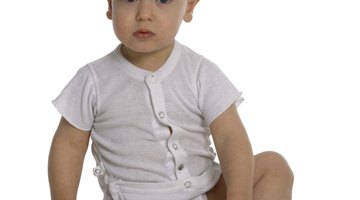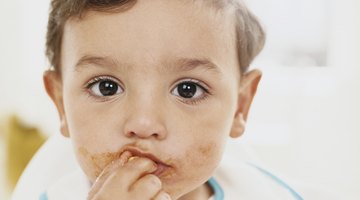Stool Color in Toddlers
Many new parents, in an effort to stay on top of their baby's bodily functions, pay close attention to diaper contents. By the time your child reaches toddlerhood you might have relaxed on this inspection, but it's still good to keep an eye on your child's stool.
Most of the time, your toddler's stool color will not be cause for discussion. But there are some situations in which you should talk to your doctor.
Normal Color Ranges
Stool color in babies and toddlers ranges wildly from yellowy-brown if the child drinks infant formula to a more mustard-yellow color in breastfed babies. Toddlers who are still nursing but who are also eating table food can have stools that range from brown to orange to yellow or green, depending on the daily menu.
One bowel movement can provide a rainbow of color, since toddlers are not always good at taking small bites and chewing their food well. You might find an odd-colored chunk in your toddler's diaper on a routine basis.
Medical Reasons for Color Changes

Green & Yellow Stool in Toddlers
Learn More
There are several medical reasons why your toddler might produce unusual stools. According to the Mayo Clinic website, anti-diarrhea medications can make your child's stool white or clay-colored.
Iron supplements in children's vitamins can cause dark or black bowel movements.
If your toddler has been constipated, she might develop minor fissures or tears in the anus that can bleed, giving feces a reddish hue. Gastrointestinal conditions can also contribute to stools that are not in the green-to-brown range.
Food Sources of Unusual Colors
The foods your young child eats--along with the odd nonfood item like chalk, crayons or molding dough--might cause you temporary alarm during a diaper change. Fruit punch, crackers and cereals that contain food colorings, grape juice and chocolate cookies can all cause your toddler's stool to look bloody and dark.
Bright green feces can be the result of eating a healthy dose of green vegetables or a green frozen treat. Stool color changes of this kind are nothing to worry about unless the color remains for three days after the suspected food has been eliminated, according to Texas Children's Pediatric Associates.
Diagnosis of Problems

Foods for Toddlers With Diaper Rash
Learn More
Your child might have a physical examination or diagnostic testing to determine the cause for unusual stool colors. Your toddler's pediatrician might examine your child's anal area for fissures or hemorrhoids. Stool that takes on an altered shade due to intestinal bleeding might require a series of tests to view the digestive tract and find the location of the bleeding. In most cases, a medical history of your child's diet and any medications he is taking will pinpoint the root of the problem.
Seek Immediate Medical Attention
According to the Texas Children's Pediatric Associates, you should bring your toddler to a doctor immediately if she looks or acts very sick and also produces black or red tarry stools without having eaten anything to create such coloring. Signs of serious illness include being lethargic or non-responsive, registering a high fever or continuously vomiting.










